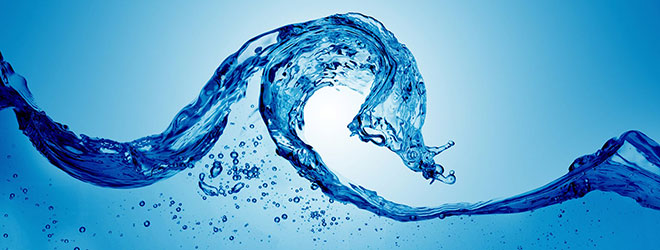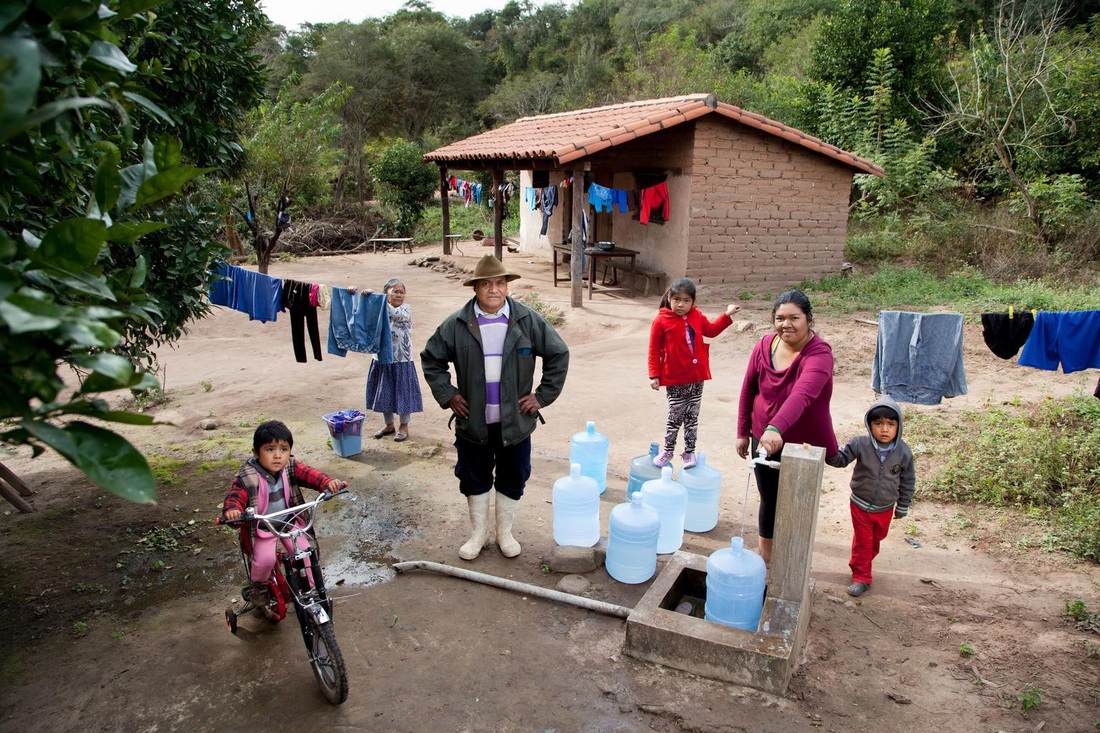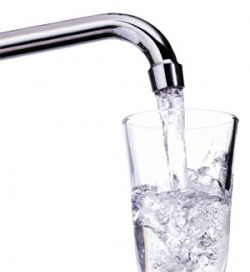Fresh water is one of our most vital resources, and when our water is polluted it is not only devastating to the environment, but also to human health. The US relies on public water systems to treat and deliver just over 44 billion gallons of clean water each day to our homes, schools and businesses. Much of that water comes from rivers, lakes and other surface water sources. Before it is delivered to our homes it is treated to remove chemicals, particulates (e.g., soot and silt) and bacteria. This clean, potable water is then used for cooking, drinking, cleaning, bathing, watering our lawns and so forth.
Those that are served by public sanitation systems rely on sewers to keep untreated waste water from being released into the environment where it could potentially contaminate our drinking water sources and the natural environment. When the water goes down the drain or is flushed down the toilet, it usually enters a sewer system where it travels to a waste water treatment plant. The plant treats the waste water and removes solid waste and other contaminants before releasing the treated water it into the environment. Depending on the type of treatment the waste water receives, water that is released could have different levels of quality from the water body into which it is released.
Even though our local and federal governments make large investments each year to keep our water clean and safe, our water systems still do not receive the amount of funding needed to keep them working properly. A 2007 EPA survey found that water and waste water infrastructure projects across the country will need a total of $334.8 billion for the 20-year period from January 2007 through December 2027. Unfortunately, during fiscal year 2012, allotments from the Clean Water State Revolving Fund G totaled only $1.5 billion for all states. As a result of underfunding, much of our aging infrastructure either doesn’t work properly or is in need of upgrades, all while strained by a growing population, economic development and climate change variability.
One result of underfunding water infrastructure is massive water main breaks. For example, in 2010, a massive main break in Boston led to an order for the public to boil water that affected 2 million people. According to a 2012 report by The American Water Works Association, restoring, replacing and expanding our existing water systems to accommodate a growing population will cost at least $1 trillion over the next 25 years, if we expect to simply tread water and maintain current levels of service.
Likewise, underfunded waste water infrastructure leads to between 23,000 and 75,000 sewage leaks each year, allowing, on average, 1.26 trillion gallons of untreated sewage to leak into our waterways at a clean-up cost of over $50 billion. According to the EPA, 40 percent of all waterways in the US do not meet national water quality standards, due in large part, to leaking sewer systems. A national survey also found that over half of US rivers and streams are in a state of poor biological condition which harms the viability of those waterways to sustain healthy populations of aquatic insects and other aquatic life.
Furthermore, a recent analysis found that the number of beach closing and advisory days in 2011 reached the third-highest level in the 22-year history of analyses, totaling 23,481 days. More than two-thirds of those were due to bacteria levels that exceeded public health standards, indicating the presence of human or animal waste in the water. Illnesses commonly caused by sewage contamination in water systems include diarrhea, hepatitis A, meningitis, ulcers, myocarditis (inflammation of the heart) and a number of other diseases. These high numbers confirm that the nation's beaches continue to suffer from serious water pollution.
The quality of our water is directly linked to the quality of our lives. By supporting clean water initiatives and similar measures that improve our water and wastewater treatment systems, we can each have a hand in ensuring clean, safe water for ourselves, our families and our communities.
REFERENCE: http://www.gracelinks.org/2382/the-importance-of-clean-water
Those that are served by public sanitation systems rely on sewers to keep untreated waste water from being released into the environment where it could potentially contaminate our drinking water sources and the natural environment. When the water goes down the drain or is flushed down the toilet, it usually enters a sewer system where it travels to a waste water treatment plant. The plant treats the waste water and removes solid waste and other contaminants before releasing the treated water it into the environment. Depending on the type of treatment the waste water receives, water that is released could have different levels of quality from the water body into which it is released.
Even though our local and federal governments make large investments each year to keep our water clean and safe, our water systems still do not receive the amount of funding needed to keep them working properly. A 2007 EPA survey found that water and waste water infrastructure projects across the country will need a total of $334.8 billion for the 20-year period from January 2007 through December 2027. Unfortunately, during fiscal year 2012, allotments from the Clean Water State Revolving Fund G totaled only $1.5 billion for all states. As a result of underfunding, much of our aging infrastructure either doesn’t work properly or is in need of upgrades, all while strained by a growing population, economic development and climate change variability.
One result of underfunding water infrastructure is massive water main breaks. For example, in 2010, a massive main break in Boston led to an order for the public to boil water that affected 2 million people. According to a 2012 report by The American Water Works Association, restoring, replacing and expanding our existing water systems to accommodate a growing population will cost at least $1 trillion over the next 25 years, if we expect to simply tread water and maintain current levels of service.
Likewise, underfunded waste water infrastructure leads to between 23,000 and 75,000 sewage leaks each year, allowing, on average, 1.26 trillion gallons of untreated sewage to leak into our waterways at a clean-up cost of over $50 billion. According to the EPA, 40 percent of all waterways in the US do not meet national water quality standards, due in large part, to leaking sewer systems. A national survey also found that over half of US rivers and streams are in a state of poor biological condition which harms the viability of those waterways to sustain healthy populations of aquatic insects and other aquatic life.
Furthermore, a recent analysis found that the number of beach closing and advisory days in 2011 reached the third-highest level in the 22-year history of analyses, totaling 23,481 days. More than two-thirds of those were due to bacteria levels that exceeded public health standards, indicating the presence of human or animal waste in the water. Illnesses commonly caused by sewage contamination in water systems include diarrhea, hepatitis A, meningitis, ulcers, myocarditis (inflammation of the heart) and a number of other diseases. These high numbers confirm that the nation's beaches continue to suffer from serious water pollution.
The quality of our water is directly linked to the quality of our lives. By supporting clean water initiatives and similar measures that improve our water and wastewater treatment systems, we can each have a hand in ensuring clean, safe water for ourselves, our families and our communities.
REFERENCE: http://www.gracelinks.org/2382/the-importance-of-clean-water















 RSS Feed
RSS Feed
